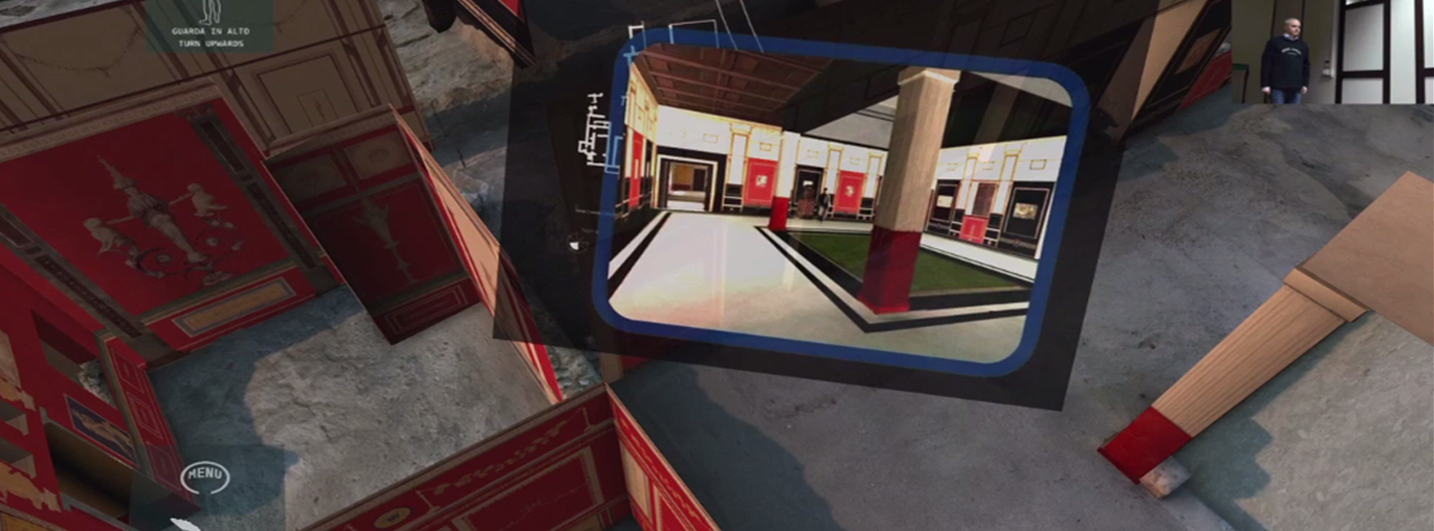
by Sofia Pescarin and Augusto Palombini
Virtual Archaeology deals with the study, interpretation and communication of archaeological heritage and of its context, through a process of acquisition, reconstruction and validation of the ancient environment. Virtual Archaeology may be misinterpreted as a mere digital reproduction of cultural assets, while in fact it is first of all a simulation process that, by means of the combination of various elements, objects, behaviours and ecosystems, seeks to obtain a scientifically plausible and emotionally powerful representation of a disappeared ancient environment. Its goal is to identify different potential “realities” of the information, in order to offer an enhanced cognitive experience of the heritage itself.
Virtual Archaeology follows a multi-disciplinary, open, interactive and transparent approach; its working method implies the use of various technologies for data acquisition, post processing, visualisation and communication. The final output of a Virtual Archaeology project typically starts from reality-based or source-based data. Reality-based datasets are gathered through in-field acquisition techniques, using DGPS, Laser Total Station, 3d scanning and/or photogrammetry. Source-based datasets are directly modelled in Computer Graphics software or other geo-spatial/environmental editors. The visualisation and communication may follow various types of styles, in accordance with the desired interactivity and immersive level: movies, multimedia applications, immersive VR applications, virtual story-telling, multiuser 3d environments, web3d, complex simulations, augmented reality, and artificial life.
Historically, the term “Virtual Archaeology” was used for the first time by Paul Reilly, in a paper presented in 1990, during the Conference of Computer Applications and Quantitative Methods in Archaeology (CAA). The term was referred to the possibility of virtually and digitally re-excavating a site. During the 1990s it was referred to a wide variety of interactive visualizations, but it was also inappropriately applied and generalized to any use of 3d models of monuments and objects, lacking any sort of interaction.
Virtual Archaeology development can be seen as a parallel phenomenon to the emergence of “Virtual Reality”, on the general understanding that Virtual Reality is “about acceptable substitutes of real 3d environments” and includes “the possibility to navigate and interact with them”. In 1998, when for the first time the CAA Symposium was organised in the Mediterranean Basin, a specific session was dedicated to Virtual Archaeology and then published autonomously from the Symposium Proceedings. This greatly contributed to the fact that, after 2000, the general direction slightly changed and Virtual Archaeology became a more structured discipline, focused on the development of simulation processes.
The London Charter was drafted in 2009 by the scientific community interested in computer-based visualization of Cultural Heritage. This charter was then followed by the Seville Principles to Virtual Archaeology that better define Virtual Archaeology as a discipline of its own. The main effort of the above documents was to focus on the formalization of the validation process and the transparency of sources used for reconstruction.
Since its inception, Virtual Archaeology has also had a remarkable impact on the epistemological aspect of the whole archaeological domain. Indeed, the need for the representation of an object, besides its description, fosters an interpretation effort. Moreover, in the last decade, the studies on semantic synthesis for 3d models metadata contributed to a reflection on project standards, in particular archaeological record taxonomy and archiving information structure.
Finally, with the spread of state-of-the-art hardware devices for 3d printing, Virtual Archaeology unexpectedly opened up interesting economic perspectives for Cultural Heritage merchandising and business models, and re-ignited a profound discussion on the Intellectual Property Right of Cultural Heritage.
A brief history of Virtual Archaeology, through some relevant projects:
VMAC – 2016